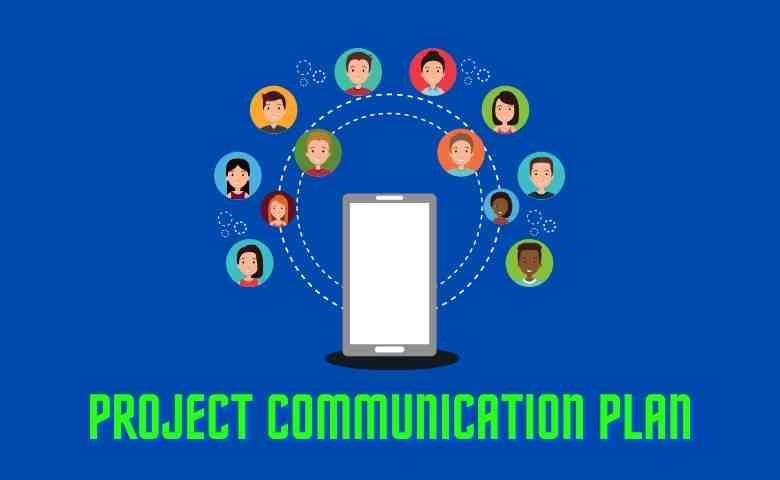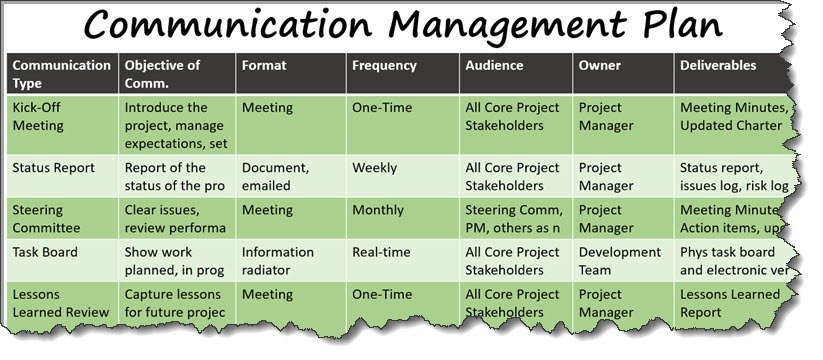What is Communication Planning in Project Management?
Are you wondering about what is a communication plan in project management? You’re not alone, many share your question. When it comes to managing a project, effective communication is key. It’s not just about sending emails or holding meetings; it’s about creating a comprehensive communication management plan. This is where a communication plan comes into the picture. A plan that outlines who needs to be kept in the loop, the roles each team member plays, the communication goals, and the channels and schedule for communication. Let’s dive deeper into what a project management communication plan entails and why it’s so crucial for successful project execution.
What is a Project Management Communication Plan?

A communication management plan in project management is a practical roadmap that outlines how, when, and why everyone involved in a project will communicate with one another. Consider it as a connector to prevent miscommunication and keep everyone on the same page.
A project management communication plan typically includes these vital elements:
- Stakeholders: This identifies all those who expect to receive updates including team members, managers, clients, and anyone directly or indirectly involved in the project.
- Project Roles: A clarification of who does what in the project. You’d find roles such as the project manager, team members, and stakeholders listed here.
- Communication Goals: This specifies the purposes of communication from the project manager. A goal could be as simple as providing consistent updates to stakeholders.
- Channels: Defining where communication will take place. Emails, in-person meetings, digital collaborative tools – the plan is to clarify the most effective means.
- Schedule: Last but not least is the timetable of communication. The plan could suggest a daily briefing or weekly meeting. The frequency of communication is decided here.
How to Make a Project Management Communication Plan?

Communication is crucial in every aspect of life and it’s no different in project management. Let’s look into how you can create an efficient project management communication plan that can add more clarity to your roles and boost the progress of your team.
1. Choose a Format
Deciding on the format of your communication plan is the first step in creating an efficient project management communication plan. The format effectively dictates how information is presented. This could be anything from face-to-face meetings, emails to team communication tools. Your chosen format needs to meet the distinct needs of your team and project. Video meetings, status reports, communication apps, presentations, and Weekly emails are all tools at your disposal.
2. Set a Communication Goal
Setting a clear communication goal is compulsory in a communication plan for project management. For instance, your goal could be making your meetings and emails efficient to avoid slowing down the project. Having a set goal aids in maintaining focus and ensures every message sent brings you a step closer to your ultimate project goals.
3. Identify Stakeholders
Understanding who your stakeholders are aids in designing a communication plan that appeals to everyone. Your communication plan should clearly state the roles and responsibilities of each team member. It should also show how decisions are made and how feedback is given and received.
4. Identify Methods of Communication
Identify the most effective methods for communicating with your team. You may decide that day-to-day communication is carried out on a tool like Monday.com, with a weekly Zoom call for updates from each team member. It’s important to ascertain the communication preferences of each stakeholder. Some may prefer emails over slack messages, and this should reflect in your communication plan.
5. Determine Frequency of Communication
The frequency of communication can dramatically affect the success of your project, so it’s important to get it right. Define communication frequency, primary channels, and dates in your project management communication plan. Also, identify the type of communication and their expected frequency. This could range from daily status check-ins to weekly reports.
6. Determine Who Provides Communication Updates
Who updates stakeholders is as crucial as how this information is relayed. The communication plan in project management needs to include who is responsible for providing these updates. Is it the project manager or different team leads? Identifying this prevents confusion and ensures your project stays on track.
Why is a Project Management Communication Plan Important?

The use of a project management communication plan considerably improves the progress of your project teams. It aids in clarifying team members’ tasks through workload report charts. These reports shed light on the status of each task: whether it’s completed, still in progress, or overdue. This not only keeps everyone abreast of where they’re within the project but also ensures we communicate in a way that is most conducive to team progress.
| Type | Method | Frequency | Purpose | Lead | Audience
|
|---|---|---|---|---|---|
| Project update | Meeting | Daily | Discuss project status and any immediate issues | Project manager | Internal project team |
| Task update | Project management software | Daily | Provide daily progress on assigned tasks | Project manager | Internal project team |
| Project review | Meeting | At scheduled milestones | Evaluate deliverables, discuss next steps | Project manager | Internal project team, PMO, and project sponsor |
| Project evaluation | Meeting | At the conclusion of the project | Reflect on project performance, identify lessons learned | Project manager | Internal project team, PMO, and project sponsor |
| Project status | Project management software | Weekly | Provide updates on project status, highlight any issues, challenges, problems, decisions, and/or changes | Project manager | Internal project team, PMO, and project sponsor |
Benefits of a Project Management Communication Plan
You should be aware of the many rewards reaped from an adequately established project management communication plan. Quality project communication can significantly contribute to the success and smooth running of a project. Let’s delve into some aforementioned benefits.
1. Helps your team set clear expectations
Through your project management communication plan, you’re paving the way for your team to establish clear expectations. No longer will there be confusion surrounding responsibilities or uncertainty in who’s supposed to update on what. Everyone is on the same page, and everyone knows their role. “Who does what?” and “Who updates who?” are questions of the past with your communication plan.
A communication plan takes the guesswork out of the equation, making it crystal clear who should communicate about what. This not only boosts efficiency but does away with miscommunication and ensures project updates are seamlessly carried out.
2. Streamlines project planning
In project management, planning is key. A project management communication plan weighs in significantly here. It streamlines project planning, granting you an outlook of all elements. You’ve got a grip on tasks, timelines, and team member assignments. Just like you’d map out deliverables to complete a project, a communication plan maps out the project communications ensuring clarity and organization.
3. Enhances communication with clients and stakeholders
This aspect is vital in maintaining transparency and trust. With your communication plan, you’ve got the power to draft a clear route for updates. Who needs to know what and when? Those are routes drafted in your communication plan, making sure clients and stakeholders are updated promptly and accurately.
This is especially beneficial when managing remote teams or dealing with clients in different time zones, making sure no matter where your team is, they’re all on the same page.
4. Creates a Document Your Team Can Reference
Having a project management communication plan creates an effective tool that your team members can reference. Whether it’s confusion about a task or inquiries about who to contact for a specific update, the project communication plan has all the answers. This document becomes an authority everyone can turn to when questions arise. It’s an effective resource for direction and keeps everyone aligned with the project’s goals.
Key Project Management Reports to Include in Your Project Communication Plan

A project management communication plan is more than a document; it has a significant role in driving project success. You’ll find it encompasses various elements, one core component being project management reports. These reports offer valuable insights, highlighting the progress, issues, and overall project status. Let’s dive deeper into some key reports you should include in your communication plan in project management:
Status Report
Project status reports are a critical part of project management and a must-include in any communication plan project management. These reports provide a snapshot of project progress at any given moment. They communicate whether tasks are completed, still in progress, or overdue, and reflect on the project’s overall progress. It’s a valuable tool enabling team communication, as well as keeping stakeholders updated.
- How Often: Weekly
- Audience: Internal Project Team, PMO, Project Sponsor
- Lead: Project Manager
- Purpose: Provide updates on project status and highlight any issues, challenges, problems, decisions, and changes.
Budget Report
The budget report is another crucial component in the communication management plan in project management. This report should lay out details ranging from allocated budget, funds utilized, to projected budget needs for upcoming stages. It clarifies budget-related milestones, displaying what’s completed and what’s in progress.
- How Often: At scheduled milestones
- Audience: Internal Project Team, PMO, Project Sponsor
- Lead: Project Manager
- Purpose: Discuss budget status and resource allocation.
Workload Report
Workload reports help in managing tasks and monitoring team performance within your communication plan template project management. These reports illustrate how far along each team member is with their tasks, significantly enhancing workload management.
- How Often: Daily
- Audience: Internal Project Team
- Lead: Project Manager
- Purpose: Provide daily progress on assigned tasks.
Project Dashboards
Project dashboards, part of an effective communication plan example project management, don’t just track metrics but provide a simplified view of complex project information. These dashboards offer real-time data visualization which can easily be interpreted and shared among team members and stakeholders
- How often: Real-time
- Audience: Internal Project Team, PMO, Project Sponsor
- Lead: Project Manager
- Purpose: Monitor and share real-time data on project progress.
How to Use a Communication Plan for Project Management?

1. Don’t Get Lost in the Details
While it’s essential to meticulously plan your communication steps, it’s equally important to make sure you’re not getting lost in the details. A workload report, for example, provides invaluable insights into the current progress of your project. It charts the workload according to the teams’ progress and their tasks. This type of report communicates how far along each team member is with their tasks, providing significant transparency to your project management communication plan. This way, everyone knows where they stand in the larger picture.
2. Standardize the Process
A successful communication plan in project management hinges on standardized processes. If your team works best and most swiftly through certain communication channels, leverage them! To optimize project communication, adopt uniform processes such as how proofs are created, revised, and approved. Meeting your team’s workflow and work style can boost project velocities.
3. Keep Your Plan Up To Date
Lastly, it’s crucial for any communication management plan in project management to remain relevant and up-to-date. All parties involved should be well informed about the current plan. Regular training or refreshers are a good idea to ensure everyone’s keeping pace. Tools like Ganttic, for example, allow you to add your communication plan to the project, share schedules & reports, and send automated updates.
Conclusion
An effective project communication plan isn’t just about sending emails and scheduling meetings. It’s about fostering an environment where each team member is well-informed, involved, and ready to contribute to the overall success of the project. Your project’s success rely on a well-crafted communication plan. Remember, effective communication isn’t about drowning in details. It’s about clear, concise reports and standardized processes.
Frequently Asked Questions
Q1. What is the significance of a communication plan in project management?
A communication plan is crucial in project management as it ensures everyone remains on the same page, reducing misunderstandings and miscommunications. It promotes transparency, defines roles, and drives the project towards success.
Q2. Why is standardizing communication processes important?
Standardizing communication processes ensures consistency in the way information is shared. It fosters a smoother workflow by cutting through unnecessary details, and it helps to keep everyone informed and aligned on the project’s progress.
Q3. What is the role of technology tools in a project communication plan?
Technology tools like project dashboards and scheduling software aid in efficient communication. They provide visibility into workload reports, help in planning and updating tasks, and enhance collaboration among team members.
Q4. Why should one customize the communication plan according to a project’s needs?
Customizing the communication plan according to the project’s specific needs helps to ensure that the communication aligns with the project’s scope, goals, timeline, and stakeholder expectations. It enables a more targeted and effective communication approach.
Q5. What is the importance of regular training in keeping communication plans effective?
Regular training helps to keep the communication plan up-to-date. It ensures that team members understand and can efficiently utilize the communication tools and processes in place, which contributes to overall project success.

Leave a Reply